Symmetry Teaching Resources
Explore printable symmetry worksheets and activities, grid drawing activities and more maths resources for the primary classroom! This collection of teacher-created teaching resources is packed with curriculum-aligned and editable options designed to help kids develop their spatial reasoning skills, recognise patterns and understand how objects are put together.
Explore shapes and patterns through the lens of symmetry, teach students how to find the axis of symmetry and more with printables and digital activities that have undergone a thorough review from our expert teachers to ensure they're ready for your classroom!
Want to learn more about how to teach symmetry, or looking for fresh ways to engage your students? Read on for a primer from our teacher team!
What Is Symmetry? A Definition for Kids
If you're looking to introduce your lesson by explaining what symmetry is, this kid-friendly definition of the geometry concept may help!
Symmetry is when something is exactly the same on both sides. Think of it like a mirror — if you were to draw a line down the middle, both sides would be identical.
If a shape cannot be split in this way, we call it asymmetrical.
What Is the Line of Symmetry? A Definition for Kids
Of course, one of the key concepts of any symmetry lesson plan is learning about the line of symmetry — what it is and how to find it. Here's one way to explain it to your students!
The line of symmetry is like an imaginary line that cuts something in half so that both sides are exactly the same. It is also called the axis of symmetry.
The line of symmetry of a shape is based on its orientation, meaning that the line that splits an object into two perfectly matched halves can appear differently — depending on the shape.
Shapes can have any of the following:
- Vertical Line of Symmetry
- Horizontal Line of Symmetry
- Diagonal Line of Symmetry
How to Find the Line of Symmetry
To find the line of symmetry, have your students fold an object — such as a piece of notebook paper — in half or draw a line down the middle to see if both sides match.
For example, if they have a square, students can draw a line from one corner to the opposite corner to find the line of symmetry. You can also have students draw heart shapes — or use a printed heart template — and fold it in half to find the Y-axis that splits the two halves of the heart.
Once they find the line of symmetry, students can use it to create symmetrical patterns or designs!
What Are the Different Types of Symmetry?
There are several different types of symmetry that students will learn about throughout primary school. Here's a look at the four types teachers should know about!
Line Symmetry or Reflexive Symmetry
Line symmetry — also called reflexive symmetry — describes when something is exactly the same on both sides of a line. It's a bit like a magic trick that makes things look exactly the same on both sides of a line, and it's a fun way to make art and designs — if you were to put colourful paint on one side of a piece of paper, then fold the paper in half while the paint is still wet, you would have a beautiful piece of art that has line symmetry.
To explain this to students, you might want to use the example of a butterfly.
Imagine you have a butterfly that has the same shape and pattern on both sides of its body. That means that the butterfly has line symmetry! If you were to draw a line down the middle of the butterfly's body, both sides would match up perfectly.
Rotational Symmetry
If you can keep rotating an object around, and it will always look the same after 60 degrees, 120 degrees, 180 degrees, and so on, that means it has rotational symmetry! Some shapes that have rotational symmetry include squares, circles, equilateral triangles and hexagons.
Rotational symmetry is a bit like spinning a toy around and around and seeing if it looks the same from all angles. Imagine if you have a toy car with a circle on it. If you spin the car around, you'll see that the circle looks the same in every direction. This means that the circle has rotational symmetry.
Translational Symmetry
Translational symmetry is when something looks exactly the same no matter where you move it. Kids might think of this type of symmetry as like a sliding game that makes things look the same no matter where you move them.
To use the toy car example from above, imagine if you took that toy car and you slid it to the left or right. The car would look exactly the same in every position along the way. This means that the car has translational symmetry.
Glide Symmetry
Glide symmetry is like a sliding and flipping game that makes things look the same no matter how you move them.
Let's go back to the butterfly for this one. Say you have a butterfly with its wings spread out. If you slide the butterfly to the left or right and then flip it over, the butterfly will look the same as it did before. This means that the butterfly has glide symmetry!
- Free Plan
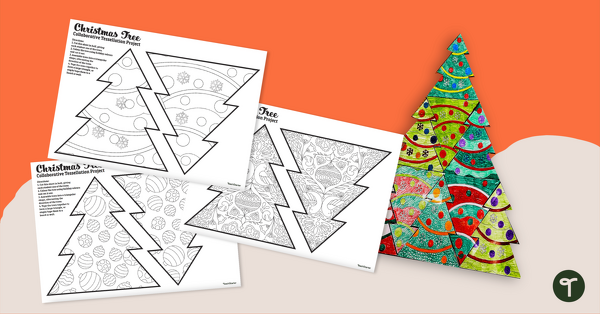
Tessellation Christmas Tree - Printable Project
Engage your students in the weeks before Christmas with a collaborative Christmas Tree Tessellation project.
- Plus Plan
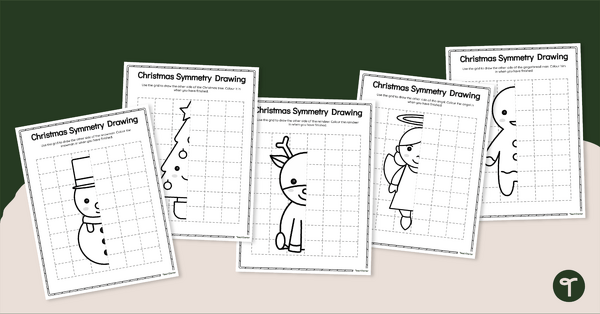
Christmas Symmetry Worksheets - Symmetry Drawing Activity
Explore symmetry with these Christmas symmetry worksheets.
- Plus Plan
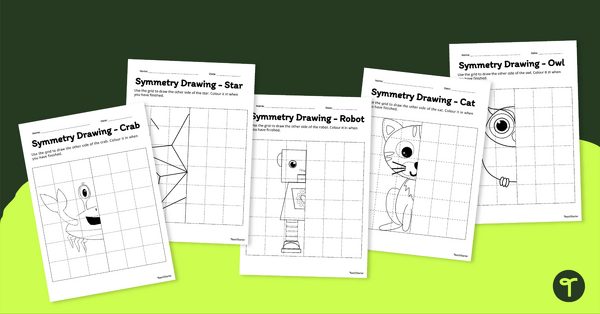
Symmetry Drawing Worksheet Pack
Teach your students about symmetry using this series of drawing worksheets where they must copy an image symmetrically using grid lines for reference.
- Plus Plan
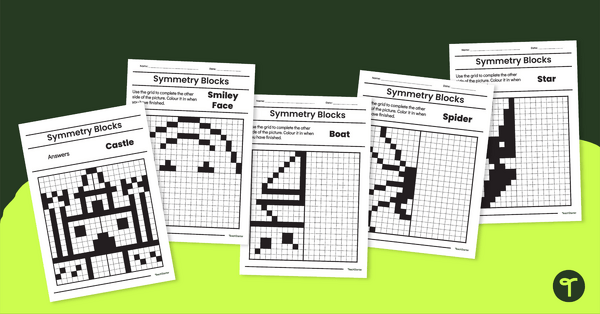
Symmetry Worksheets
Use this set of eight symmetry worksheets to help students understand symmetry, the line of symmetry, and symmetrical objects.
- Plus Plan
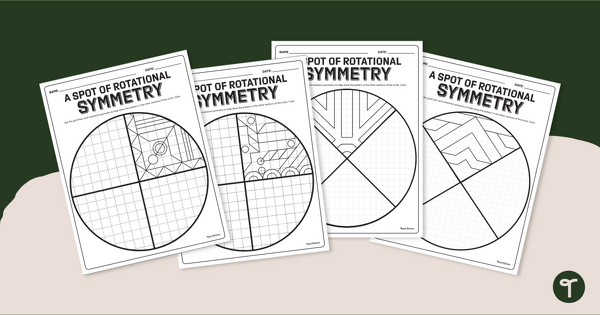
Exploring Rotational Symmetry Worksheets - Drawing Prompts
Encourage creativity and practice knowledge of rotational symmetry with a set of exciting symmetry drawing worksheets.
- Plus Plan

Draw The Line of Symmetry Worksheets
Use this lines of symmetry worksheet to help students practise drawing lines of symmetry on 2D shapes.
- Plus Plan
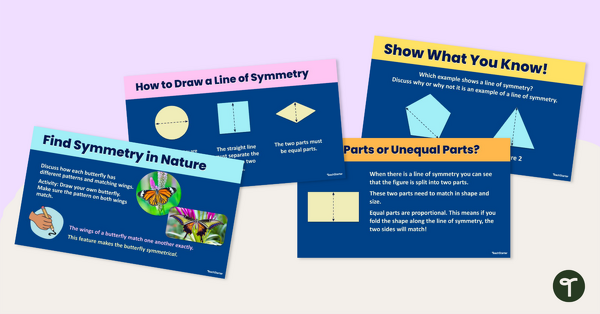
Lines of Symmetry Teaching Slides
Introduce your students to the concept of lines of symmetry using this comprehensive and easy-to-understand 12-slide teaching presentation!
- Plus Plan
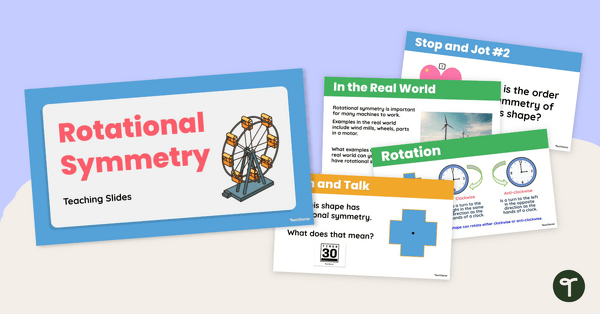
Rotational Symmetry Teaching Presentation
Share this 12-slide rotational symmetry teaching presentation with your Grade 4s to expose them to the concept of rotational symmetry.
- Plus Plan
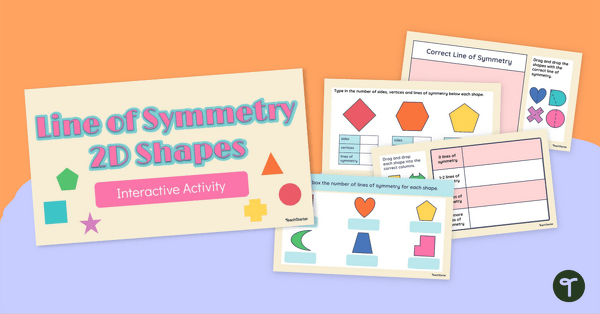
Line of Symmetry 2D Shapes Interactive Activity
Engage your students in a variety of interactive activities all focused on the line of symmetry for 2D shapes.
- Plus Plan

Parallel Perpendicular Lines Activity — Board Game
Play this parallel perpendicular lines activity with your students to give them practice identifying line types in a variety of settings.
- Plus Plan
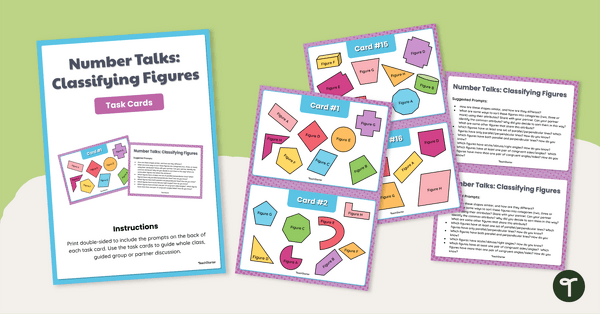
Classifying Shapes Activity — Number Talk Cards
Spark discussion with this classifying shapes activity that will have students identifying the attributes of 2D shapes.
- Plus Plan
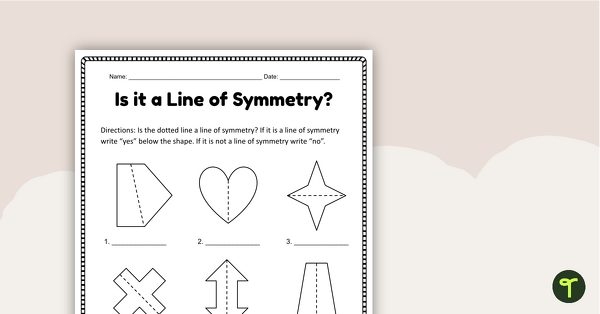
Is It a Line of Symmetry? Worksheets
Assign this lines of symmetry worksheet to your students to check their understanding of the existence of a line of symmetry on various 2D shapes.
- Plus Plan
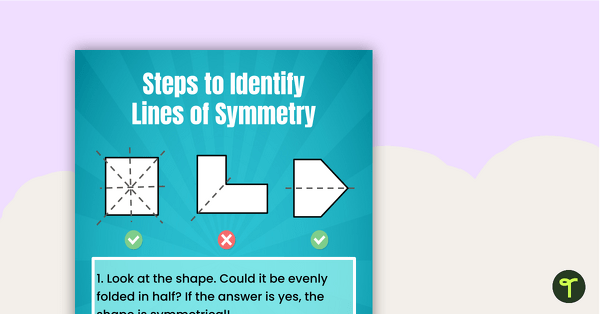
Identifying Lines of Symmetry Poster
Display this poster in your classroom as a reference tool for students to learn to identify lines of symmetry.
- Plus Plan
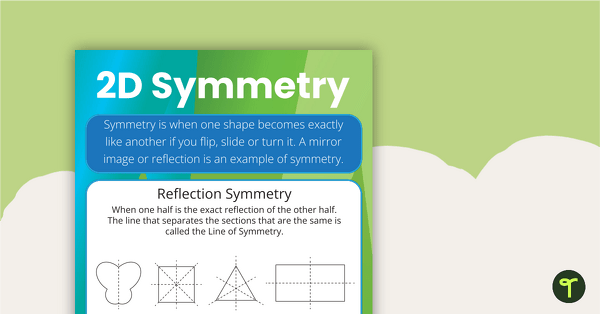
2D Symmetry Poster - Reflection and Rotational
This 2D symmetry poster explores both reflection and rotational symmetry.
- Plus Plan
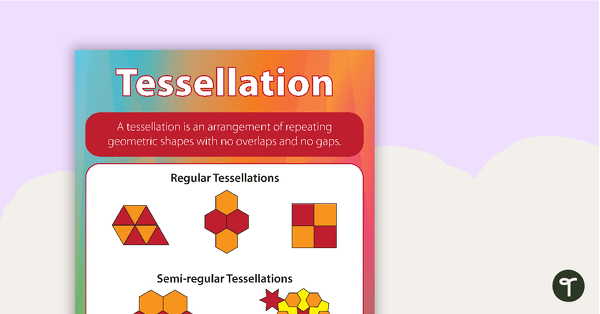
Tessellation Poster
Making tessellating patterns is fun!
- Plus Plan
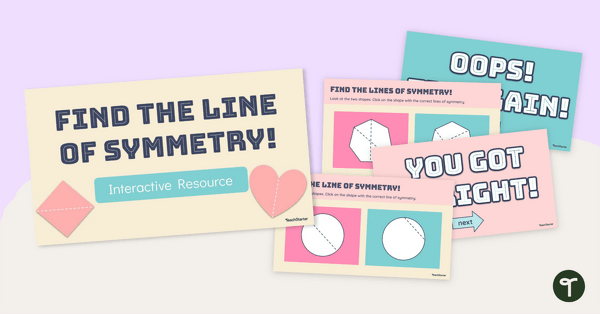
Find the Line of Symmetry Interactive Resource
Have fun with your class using this interactive learning tool to find the line of symmetry on various shapes and objects!
- Plus Plan
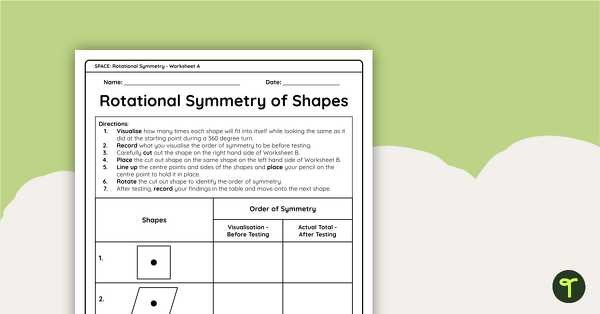
Rotational Symmetry of Shapes Grade 4 Worksheet
Use this two-page rotational symmetry worksheet consolidate student understanding of this geometry (space) concept.
- Plus Plan
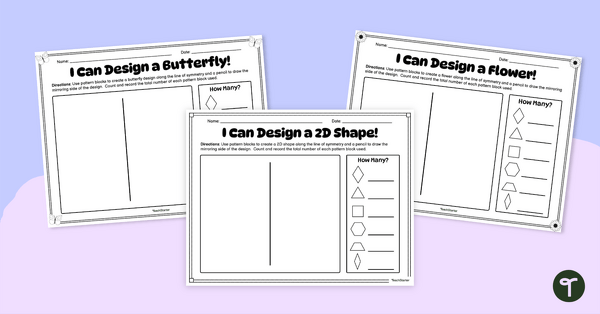
Symmetry Pattern Design Worksheet
Have your students create real-world symmetrical representations using this 3-page symmetry worksheet set and a tub of pattern blocks.
- Plus Plan
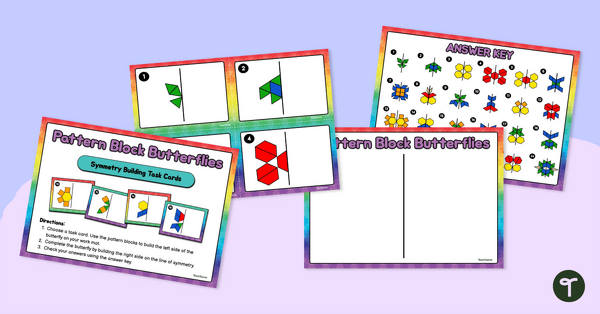
Pattern Block Butterflies Symmetry Task Cards
Bring some colourful fun into your classroom with these symmetry butterflies, a hands-on learning activity for young students to explore the concept of symmetry.
- Plus Plan
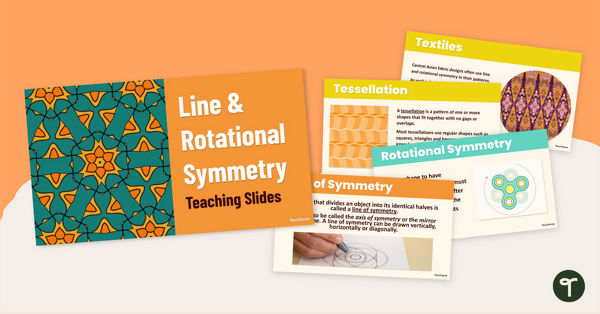
Line and Rotational Symmetry Teaching Slides
Use this comprehensive deck of 20 teaching slides to introduce your Grade 4 students to line symmetry and rotational symmetry.
- Plus Plan
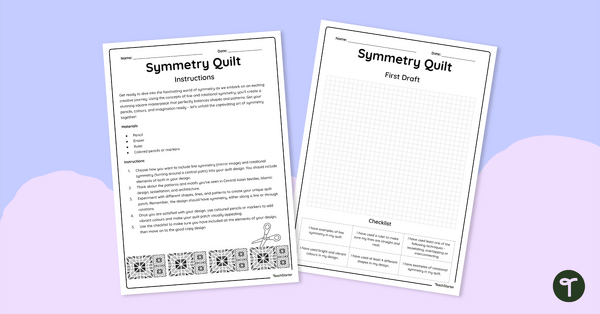
Line and Rotational Symmetry Quilt Activity
Have your students apply their knowledge of line and rotational symmetrical designs and collaborate with their peers using this fun quilt design activity!
- Plus Plan
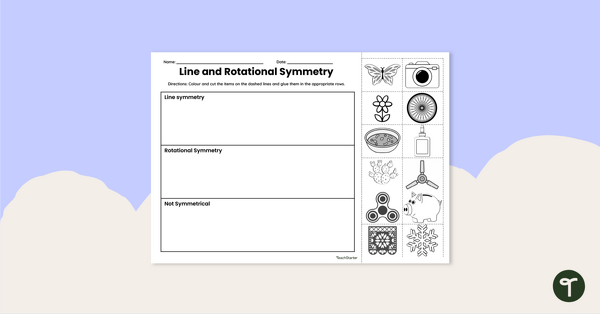
Line and Rotational Symmetry Sorting Activity
Have your students determine whether each object has line symmetry, rotational symmetry, or no symmetry, with this fun cut and paste worksheet.
- Plus Plan
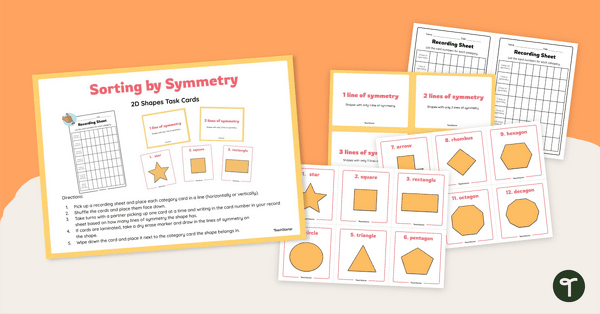
Sorting by Symmetry: 2D Shape Task Cards
Help students practise sorting 2D shapes by the number of lines of symmetry using this fun set of mathematics sorting cards.
- Plus Plan
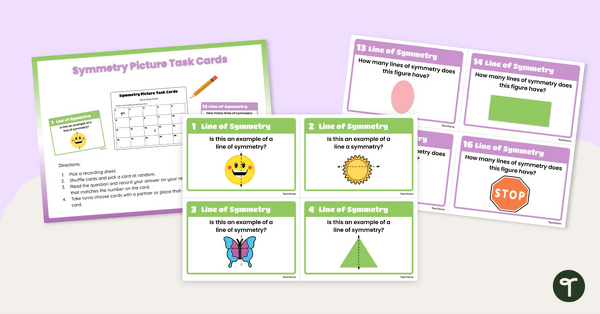
Symmetry Picture Task Cards
Use these fun and colourful symmetry picture task cards to help students identify lines of symmetry in both everyday objects and 2D shapes.
- Plus Plan
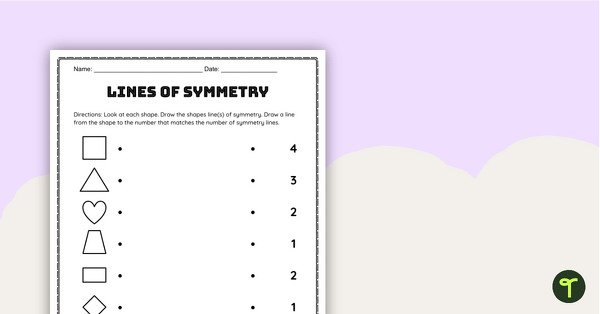
Matching Lines of Symmetry Worksheets
Introduce the concept of ‘multiple lines of symmetry’ to your Grade Fours with this match-up worksheet set.
- Plus Plan
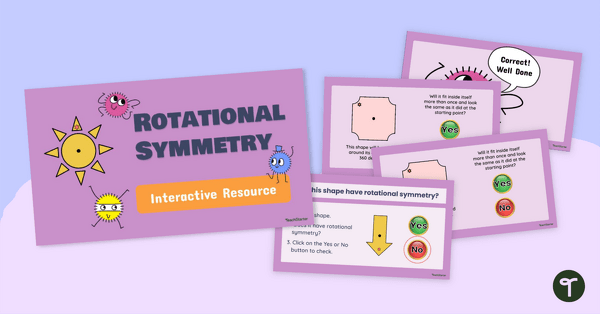
Rotational Symmetry Interactive Activity
Use this engaging interactive resource to consolidate student understanding of rotational symmetry by answering a series of questions.
- Plus Plan
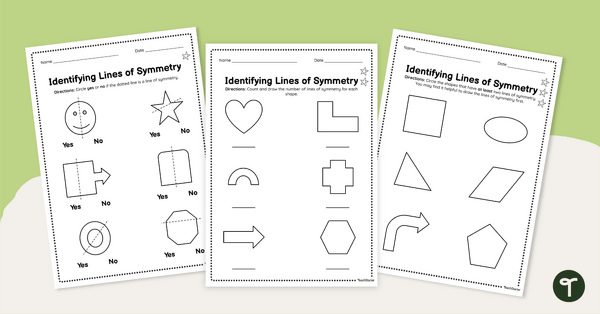
Identifying Lines of Symmetry Worksheets
Use this set of differentiated worksheets to help students practise the process involved with identifying lines of symmetry on two-dimensional shapes.
- Plus Plan

Identifying Lines of Symmetry Interactive Activity
Explore this rail-yard themed interactive activity with your students to teach them how to identify lines of symmetry.
- Plus Plan

Identifying Lines of Symmetry Task Cards
Use this set of 24 task cards to help your students practise identifying lines of symmetry in 2D shapes.
- Plus Plan
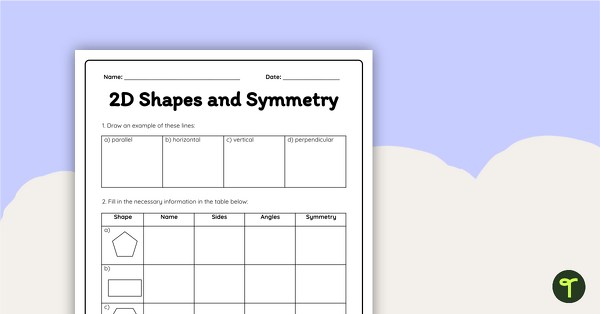
Shapes and Symmetry — Year 2 Worksheet
Assess year 2 students' understanding of 2D shape symmetry with this set of two worksheets.
-
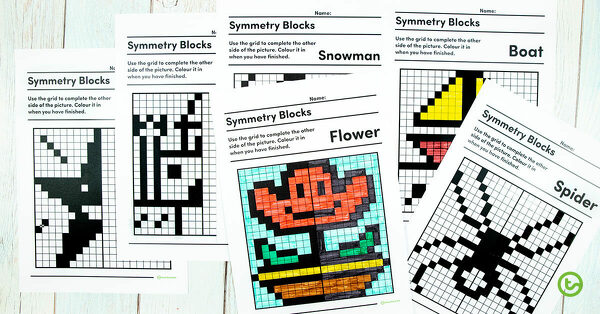
Symmetry for Kids - Grid Drawing Activities (NEW Resource)
Do you want a fun, engaging activity to teach symmetry for kids? These fun building block grid activities are the best way to do it!